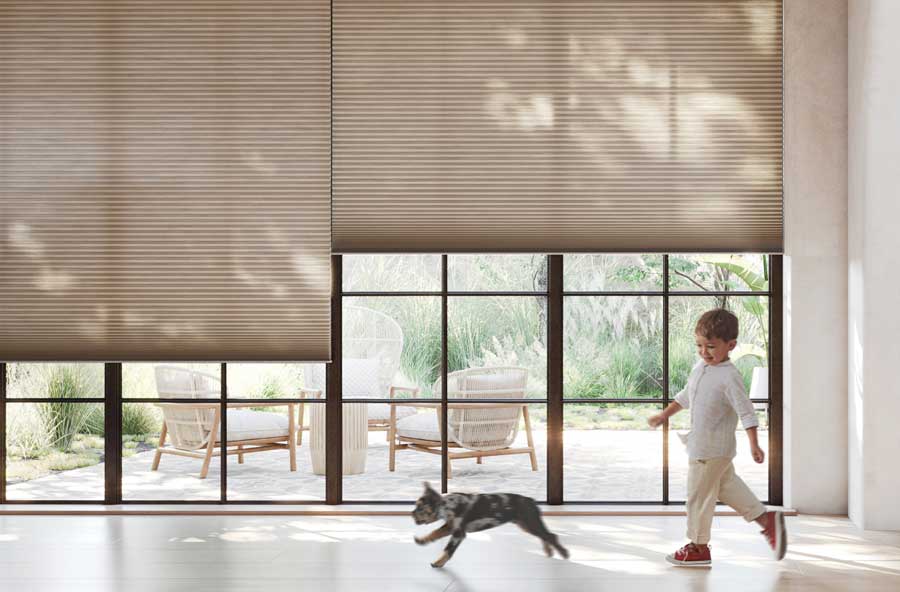Choosing the Best UV-Blocking Window Treatments for Different Rooms

Sunlight streaming through your windows feels wonderful, but the ultraviolet (UV) portion of those rays can quietly fade furniture, artwork, and flooring while raising indoor temperatures. Choosing UV-blocking window treatments for each room ensures you enjoy natural light without the costly side effects. In this guide we break down how UV damage happens, what to look for in protective coverings, and the best product picks for living rooms, bedrooms, home offices, and more.
How UV Light Damages Your Interiors
Up to 40 percent of fading on fabrics and finishes comes from UV radiation. The shorter wavelengths penetrate glass easily, breaking down chemical bonds in dyes and wood stains. Over time you notice muted colors on sofas, cracked leather, and dull hardwood floors. Excessive UV also heats rooms, forcing your cooling system to work harder. That combination of aesthetic and energy costs makes proactive protection essential.
Key Features of UV-Blocking Window Treatments
When shopping, focus on features that specifically target UV filtration rather than simply reducing visible light.
Fabric Density & Weave
Tighter weaves in shades or curtains physically block more rays. Look for openness factors (the percentage of fabric that is open) of 3 percent or lower for maximum filtration.
Specialized Coatings
Many roller shades and cellular blinds include reflective backings or transparent UV-absorbing films that stop up to 99 percent of harmful wavelengths while still letting in daylight.
Color & Material
Darker fabrics absorb more light and can contribute to heat gain, whereas lighter colors reflect sunlight. Synthetic materials such as polyester tend to resist fading better than natural fibers.
Energy Efficiency Ratings
Products certified by the Attachments Energy Rating Council (AERC) or ENERGY STAR offer published data on both solar heat gain and UV blockage.
Read more: How UV-Blocking Window Treatments Can Improve Indoor Air Quality
Best Options for Living Rooms
The living room often has the largest windows and the most valuable furniture, making high UV protection a priority.
Solar Roller Shades
- UV Blockage: 90–99 percent depending on openness.
- Best For: Modern spaces where you still want an outside view.
- Tip: Choose dual shades that combine a sheer solar layer with an opaque blackout layer for movie nights.
Cellular (Honeycomb) Shades
- The unique cell structure traps air, reducing heat transfer while liners filter UV.
- Available in top-down/bottom-up styles that maintain privacy without sacrificing daylight.
Layered Drapery
Pair decorative drapes with a UV-reflective liner. This classic approach offers flexible light control and an upscale look.
For custom sizing and professional installation, consider working with specialists such as, who can match fabric opacities to your exact sun-exposure needs.
Best Options for Bedrooms
Bedrooms call for a balance between UV protection and sleep-friendly darkness.
Blackout Curtains with UV Liners
These block nearly all incoming light and are ideal for shift workers or nurseries. Add magnetic side channels to eliminate glow at the edges.
Wood & Faux-Wood Blinds
Tilting slats allow fine-tuned control of morning glare, and modern UV-resistant finishes prevent the slats themselves from warping or fading.
Roman Shades
When raised, Roman shades stack neatly to reveal the view; when lowered with a light-filtering liner, they provide gentle illumination minus the harsh UV.
Best Options for Home Offices
Glare on screens is the enemy of productivity. Choose treatments that cut UV while diffusing light.
Screen Shades (Openness 1–3 Percent)
These technical fabrics act like sunglasses for your windows—outside scenery stays visible but brightness drops.
Adjustable Vertical Blinds
Great for large sliders; rotate vanes to bounce daylight off the ceiling, lighting the room indirectly and reducing eye strain.
Static-Cling Window Film
A budget-friendly DIY option. Clear films block up to 99 percent of UV and 50 percent of heat while remaining almost invisible.
Learn more: The Impact of UV Rays on Skin and How Window Treatments Provide Protection
Measuring, Installation, and Maintenance Tips
Even the best material fails if gaps let sunlight sneak past. Measure window width in three places (top, middle, bottom) and use the narrowest number for an inside mount. For outside mounts, add at least 3 inches on each side to overlap the frame.
- Secure Hardware: Use wall anchors appropriate for drywall or masonry.
- Periodic Cleaning: Vacuum fabrics with a brush attachment monthly. Wipe slats and films with a microfiber cloth.
- Inspect for Wear: Look for frayed cords or peeling film annually and replace promptly to maintain UV defense.
Cost Considerations & Energy Savings
UV-blocking roller shades start around $40 per window, while high-end motorized cellular shades can exceed $400. Although the upfront cost varies, homeowners often recoup expenses through reduced cooling bills and longer-lasting furnishings. According to the U.S. Department of Energy, well-chosen window coverings can slash heat gain by up to 77 percent during summer months.
Conclusion
From sleek solar shades in the living room to blackout drapery in the bedroom, the right UV-blocking window treatment protects your investment, boosts comfort, and enhances style. Assess each room’s exposure, functional needs, and design goals, then select coverings that provide robust UV filtration without sacrificing the daylight you love.
Frequently Asked Questions
Do I need different UV-blocking products for east- and west-facing windows?
Yes. East-facing windows get intense morning sun, while west-facing windows endure hotter afternoon rays. You may want lighter openness fabrics on the east side and darker or double-layer solutions on the west.
Will UV-blocking shades make my rooms feel dark?
Not necessarily. Many solar and cellular shades filter invisible UV while allowing ample visible light, so your space remains bright but protected.
Can window film be combined with blinds or curtains?
Absolutely. Clear UV-blocking film offers a baseline of protection, and layering blinds or curtains adds style and additional insulation.
How long do UV-protective treatments last?
Quality treatments with UV inhibitors typically last 8–10 years. Proper cleaning and avoiding harsh chemicals extend their lifespan.



